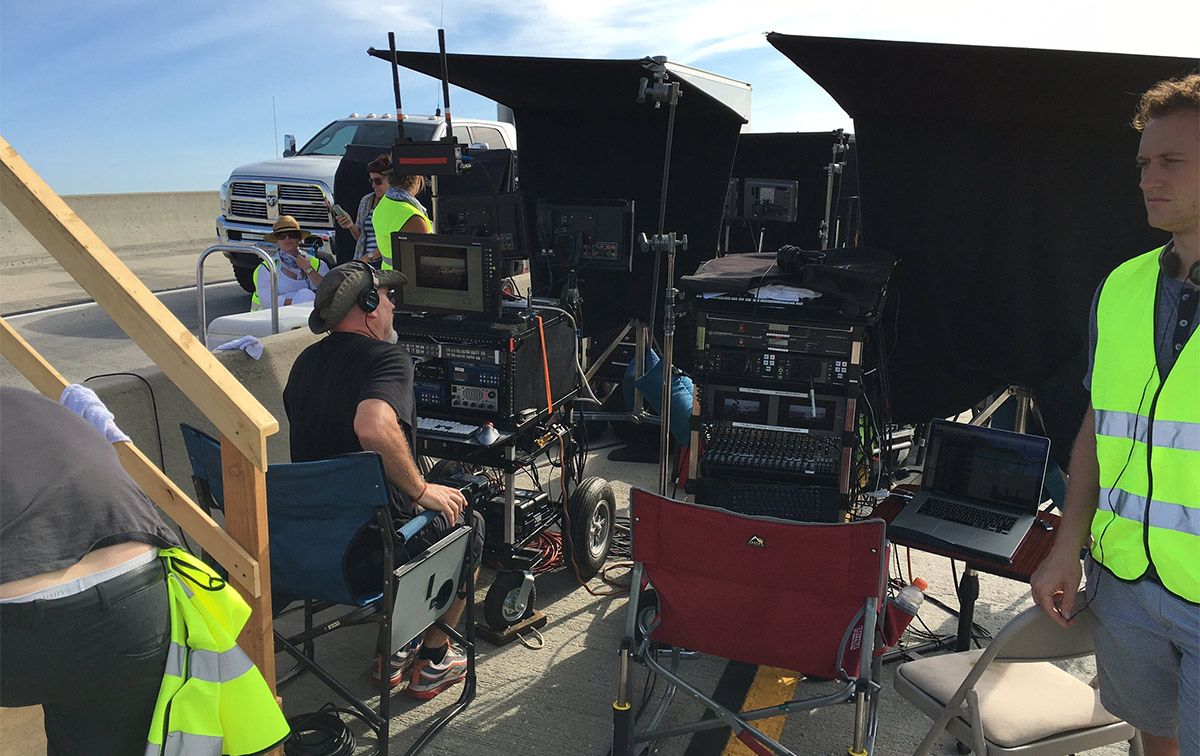"La La Land" On Set Sound Mixing and Recording with Dante
"La La Land" On Set Sound Mixing and Recording with Dante
For half a dozen years, the Sound Devices 788T was Los Angeles sound mixer Steven Morrow's go-to recorder through such productions as the James Brown movie Get on Up and many more. But the challenges of even more tracks would not go away, and hit an all-time high with his latest full-featured musical comedy, La La Land.
“For La La Land, they wanted to try to do a lot of the vocals live to a playback track. What ended up happening was our music department and our director requested that we record everything, instruments, pianos… Anything you see on screen, they wanted a track of it,” Morrow says. “Instantly we knew we were going to need a ton more tracks, and more tracks than I would be able to provide with the 788s, so I sold my 788s and upgraded to two 970s a few months before the movie started. That way I had a good amount of time to really play with them and get familiar very quickly, although the Sound Devices machines all fairly run the same. They’re set up the same…similar menus and same ideas, so it’s an easy transition from machine to machine with Sound Devices.”
The 970 is a Dante and MADI-equipped multi-track audio recorder, capable of recording up to 64 channels of monophonic or polyphonic WAV files to any of four attached drives. Morrow paired his new 970s with two Mackie boards and a RedNet 2 audio distribution system from Focusrite. Additionally, he used a Sennheiser MKH-50 boom, Sanken lavs, a Comtek PR-216 receiver, Phonak earwigs, and Lectrosonics SM mics, plus a couple of wireless mini Lectrosonics SSMs for the dance sequences.
“When we do the big concert scenes, every piece of equipment has a microphone on it or a feed coming back to us,” Morrow says. “We needed 32 channels of audio because you’d have digital drums, but that’s not one channel. It’s two. It’s a stereo drum kit, so you’d need a stereo feed, and that takes up two tracks. There’s three horns, so there’s three mics for the horns. There’s three backup singers, so you need three mics for them. There’s all of these things you need to mic.”
He adds, “That’s where the 970s really kicked in and gave us 32 tracks. I used the first 970 to go analog in, channel 1-8, and send it to the second one via Dante. The second (970) machine, I used those analog inputs, 1-8, and sent it to the first machine via Dante, so now we had 16 tracks total that are Dante back and forth. Then I used a RedNet 2 from Focusrite that got me 16 analog inputs that also digitizes to Dante, and sent that to both 970s, so there’s 32 tracks of audio. It gets a little complicated because you’re sending it back and forth, analog to digital and digital to digital.”
With so many elements to a scene, the potential for something to go wrong was always present, but Morrow says that’s where having Sound Devices on set helps even more. Take, for instance, a critical scene in La La Land shot within a narrow timeframe just after sunset.
“All we did that day was rehearse that move, rehearse the dance, and once the sun was set, we got to shoot it three times, and that’s it. You have like a half-hour to shoot it and then it’s over for the night,” Morrow explains. “You realize as you’re sitting there watching them perform, and they’re killing it, that a panic falls over you and you think, ‘Oh shoot, if these machines fail, that’s it. I’m just cooked.’ It was that thought that comes into your head, but you knew – you just sat there like, ‘These machines never fail.’”
“You never find that happening with Sound Devices. That is what I rely on every day. We’re sitting there hitting record all day, every day. The fact that they are so robust is a bonus. It’s one of those comforting things where you know when you hit record, it’s going to be fine. It’s going to roll.”
